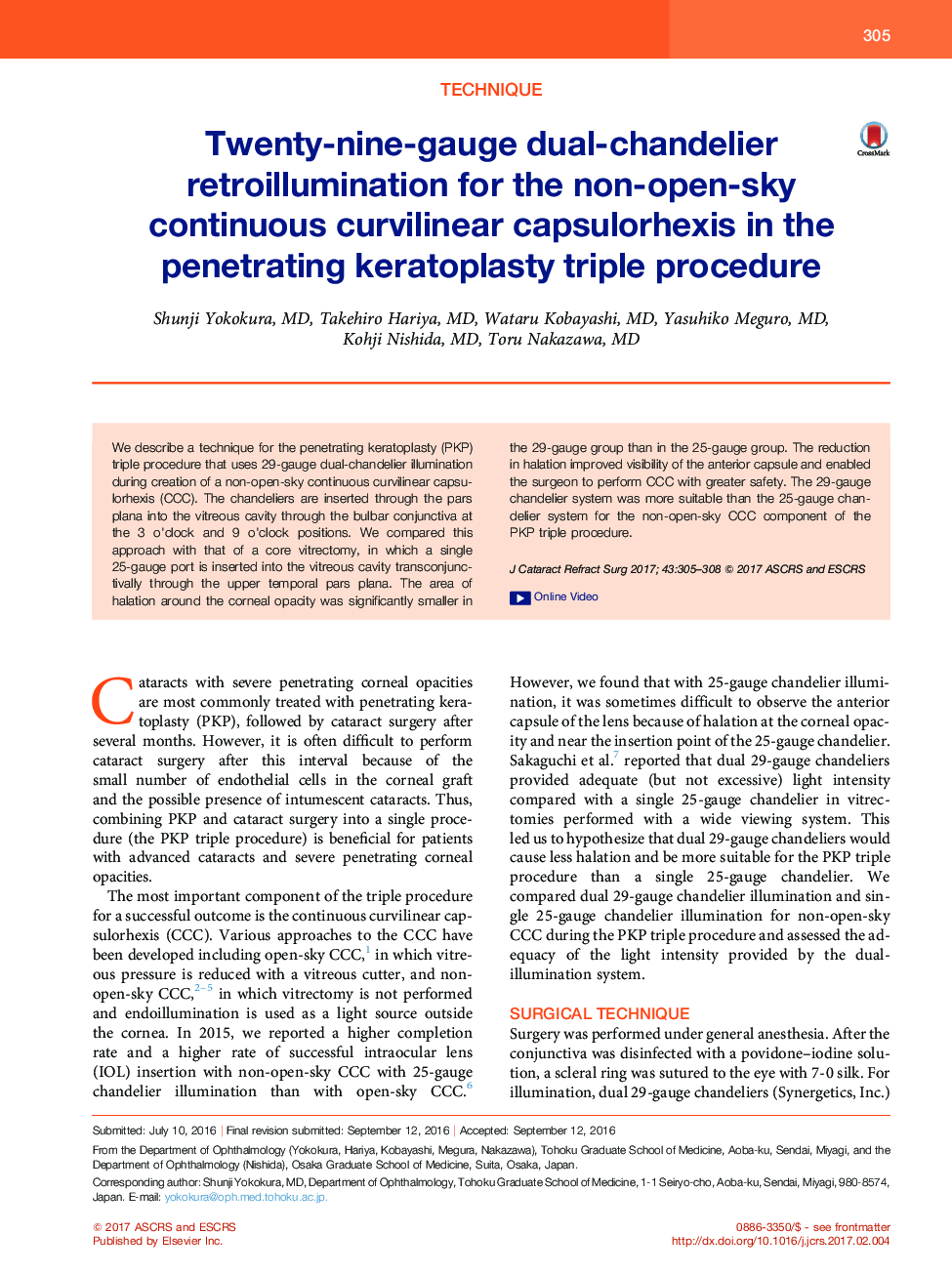| Article ID | Journal | Published Year | Pages | File Type |
|---|---|---|---|---|
| 5704526 | Journal of Cataract & Refractive Surgery | 2017 | 4 Pages |
Abstract
We describe a technique for the penetrating keratoplasty (PKP) triple procedure that uses 29-gauge dual-chandelier illumination during creation of a non-open-sky continuous curvilinear capsulorhexis (CCC). The chandeliers are inserted through the pars plana into the vitreous cavity through the bulbar conjunctiva at the 3 o'clock and 9 o'clock positions. We compared this approach with that of a core vitrectomy, in which a single 25-gauge port is inserted into the vitreous cavity transconjunctivally through the upper temporal pars plana. The area of halation around the corneal opacity was significantly smaller in the 29-gauge group than in the 25-gauge group. The reduction in halation improved visibility of the anterior capsule and enabled the surgeon to perform CCC with greater safety. The 29-gauge chandelier system was more suitable than the 25-gauge chandelier system for the non-open-sky CCC component of the PKP triple procedure.
Related Topics
Health Sciences
Medicine and Dentistry
Ophthalmology
Authors
Shunji MD, Takehiro MD, Wataru MD, Yasuhiko MD, Kohji MD, Toru MD,
